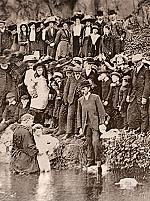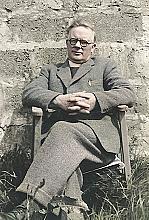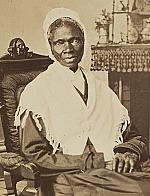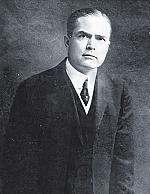Azusa Street commentary and excerpts

[Above: The Apostolic Faith, 1906—Public domain, Wikimedia]
Azusa Street was the granddaddy of North American Pentecostal revivals and a major point of dissemination for Pentecostalism abroad. It proved to be one of the most influential localized Christian revivals to take place anywhere in the world during the twentieth century.
The public received news of the happening from a Los Angeles Times story on April 18, 1906 (the day of the great San Francisco earthquake). The newspaper headline read, “Weird Babble of Tongues / New Sect of Fanatics is Breaking Loose.” Although derogatory, the coverage gave the revival free publicity. Soon the serious and the curious were making their way to Azusa Street.
Worship services continued seven days a week, from morning until night, for three and half years, in a ramshackle Los Angeles building that had once served as a horse stable. Improvised pews were made from rough planks set on nail kegs, and the pulpit consisted of two empty wooden crates set on end. Proponents and detractors alike acknowledged the revival’s astonishing power. The first issue of the Apostolic Faith newsletter in September 1906 reported: “Proud, well-dressed preachers come in to ‘investigate.’ Soon their high looks are replaced with wonder, then conviction comes, and very often you will find them in a short time wallowing on the dirty floor, asking God to forgive them and make them as little children.”
Group photos of the original leaders portray Blacks and Whites, men and women, in genuine partnership with each other. Whites acknowledged the leadership of William Seymour, a Black man. Participant Frank Bartleman (1871–1936) wrote that “the color line was washed away in [Jesus’s] blood.”
Yet Seymour’s teacher, a White man named Charles Fox Parham, arrived in Los Angeles and was horrified to see the informality of Black-White relations there. He reacted with unprintable racial slurs, creating an irreparable breach with Seymour. As it turned out, Parham had little remaining influence in the Pentecostal movement he had helped to establish.
There were further difficulties among Azusa Street leadership when one woman—possibly influenced by romantic disappointment—absconded with the only copies of the mailing lists for the Apostolic Faith newsletter, the movement’s main media outlet. Despite these setbacks the Azusa Street Revival entered a second peak period in 1911 and went on to change the world.—Michael J. McClymond.
"How and why"
From the third issue of Apostolic Faith, November 1906
The news has spread far and wide that Los Angeles is being visited with a “rushing mighty wind from heaven.” The how and why of it is to be found in the very opposite of those conditions that are usually thought necessary for a big revival. No instruments of music are used, none are needed. No choir—but bands of angels have been heard by some in the Spirit and there is a heavenly singing that is inspired by the Holy Ghost. No collections are taken. No bills have been posted to advertise the meetings. No church or organization is back of it. All who are in touch with God realize as soon as they enter the meetings that the Holy Ghost is the leader. One brother stated that even before his train entered the city, he felt the power of the revival.
Travelers from afar wend their way to the headquarters at Azusa Street. . . . In the vicinity of a tombstone shop, stables and lumber yard (a fortunate vicinity because no one complains of all-night meetings) you find a two-story, white-washed old building. You would hardly expect heavenly visitations there, unless you remember the stable at Bethlehem.
But here you find a mighty Pentecostal revival going on from ten o’clock in the morning till about twelve at night. Yes, Pentecost has come to hundreds of hearts and many homes are made into a sweet paradise below.
"More of the power"
From the first issue of Apostolic Faith, September 1906
The meetings begin about ten o’clock in the morning and can hardly stop before ten or twelve at night, and sometimes two or three in the morning, because so many are seeking, and some are slain under the power of God. People are seeking three times a day at the altar and row after row of seats have to be emptied and filled with seekers. We cannot tell how many people have been saved, and sanctified, and baptized with the Holy Ghost, and healed of all manner of sicknesses. Many are speaking in new tongues, and some are on their way to the foreign fields, with the gift of the language. We are going on to get more of the power of God.
Many have laid aside their glasses and had their eyesight perfectly restored. The deaf have had their hearing restored. A man was healed of asthma of twenty years standing. Many have been healed of heart trouble and lung trouble. . . . A brother who had been a spiritualist medium and who was so possessed with demons that he had no rest, and was on the point of committing suicide, was instantly delivered of demon power. He then sought God for the pardon of his sins and sanctification, and is now filled with a different spirit.
By Michael J. McClymond and others
[Christian History originally published this article in Christian History Issue #153 in 2024]
Michael J. McClymond is CH 153 advising editor.Next articles
When the Spirit moves: CH153 Gallery
A diverse collection of revivalists from the 1800s and 1900s
Charlie SelfChristian History Timeline: The Spirit, the gospel, and prayer
Revival movements of the modern era
The editorsSupport us
Christian History Institute (CHI) is a non-profit Pennsylvania corporation founded in 1982. Your donations support the continuation of this ministry
Donate







